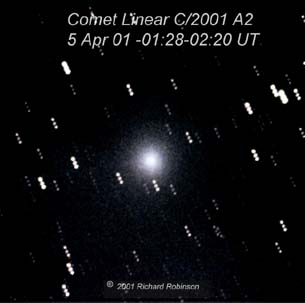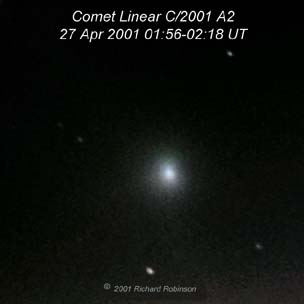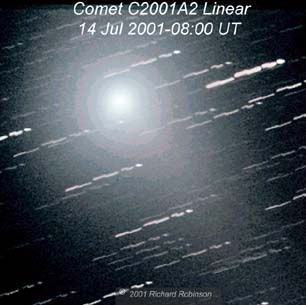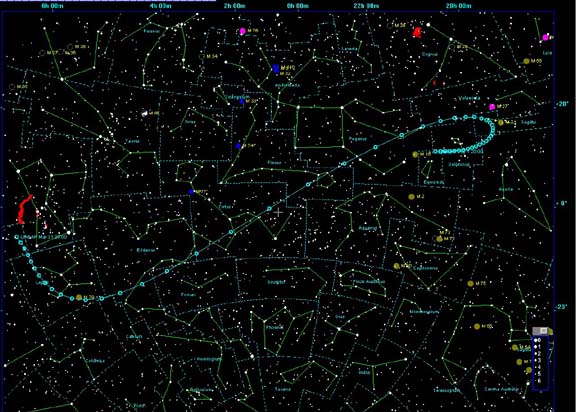
You can just start to see a tiny tail at the left
edge of the comet. The "bright" star just below the comet is GSC
5349:579 (magnitude 13.5). I measured the comets brightness as magnitude
12.9 using Astro Art Photometry feature.
Click here for a short
animation
|
Scope:
8" LX 200 SCT |
| MX
- 5C CCD & STAR 2000 w/ IDAS LPR filter. |
| Focal
Ratio: f4.2 |
| Exposure:
Two 10 min and one 20 min exposures combined. |

The comet was getting very low on my horizon for
these images. I was getting sever light polution , but you can just
make out the faint tail to the left of the comet. |
Scope:
8" LX 200 SCT |
| MX
- 5C CCD & STAR 2000 w/ IDAS LPR filter. |
| Focal
Ratio: f6.6 |
| Exposure:
Two 10 min exposures combined. |

The coma for the comet is really quite large in
this very long time exposure. It is about 2/3 the diameter of the
full moon. The tail is very light and tenuous, flowing down to the
right. The streaks are trails caused by stars as the telescope followed
the moving comet. |
Scope:
8" LX 200 SCT |
| MX
- 5C CCD & STAR 2000 w/ IDAS LPR filter. The STAR 2000 tracked
on the comet and trailed the stars. |
| Focal
Ratio: f3.3 |
| Exposure:
Four separate exposures. One 5 min, one ten min and two twenty min
(55 min total). The field of view for the image is about 22 arc min
on each side. I measured the brightness of the center of the comet
as magnotude 11.0 . |
|
Back One Page
|
Home
|



